Estimated reading time: 6 minutes
We’ve written in this blog about how to identify which animals might be causing damage to your fruit trees.
But it’s also important to think about strategies for protecting your trees to prevent the damage from happening in the first place.
In the case of big animals, it’s usually a case of protecting the trees using either tree guards, fences, or netting enclosures.
Which of these, and what type you choose, will depend on:
- the specific pest damage you’re trying to prevent;
- the size and age of the trees;
- whether you need a permanent or temporary solution; and/or
- your capacity to buy or build something in terms of your ability, available time, materials on hand, and your budget.
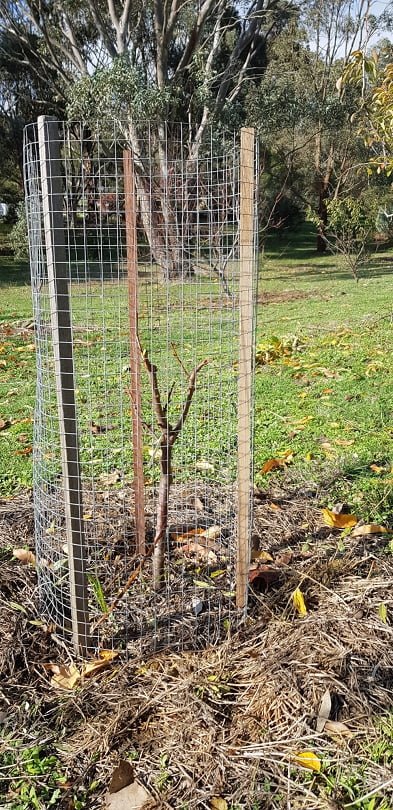
The top 5 strategies for protecting fruit trees from animals
While it’s impossible for us to give solutions for every specific situation, here are our 5 top strategies:
1. Deterrents
Once you’ve identified the pest, do some research into what they don’t like. Consider whether you can make the environment unpleasant for them. For example, hares are herbivores and are put off by the smell of meat, so a paste made out of animal fat and strong-smelling herbs applied to the trunks, or blood and bone scattered around the trees, may be enough to put them off.
2. Tree guards
At our place, we’ve often used simple corflute tree guards. They’re fantastic because they’re durable and reusable. However, they have the disadvantage of not being wide enough to enclose the low branches, so they only protect the trunk of the young fruit tree.
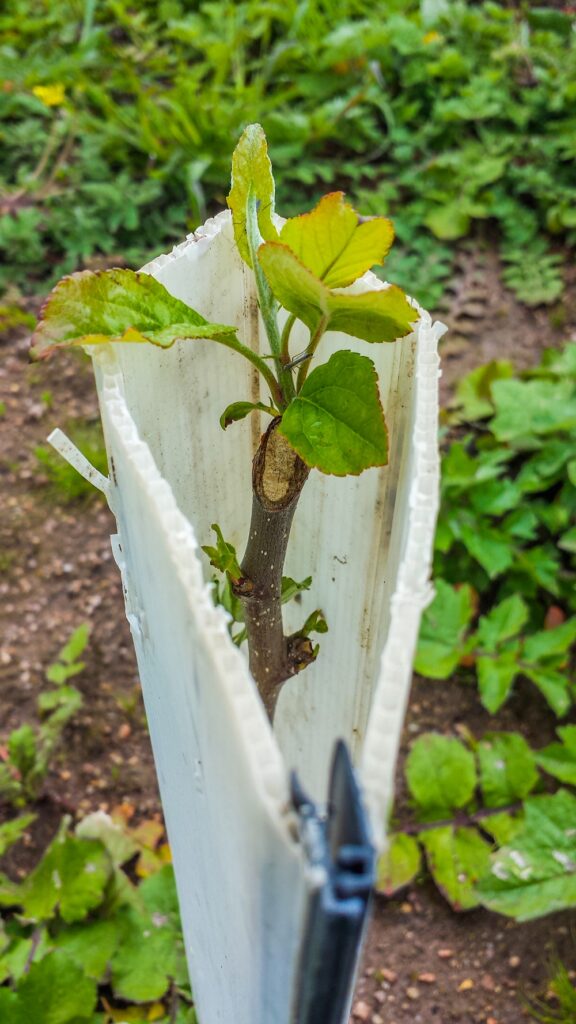
You may need to use a larger and more durable type of guard. There are heaps of “off the shelf” options available, or you may want to build one yourself. This provides much better protection for your tree but has the disadvantage of being more expensive and time-consuming to build.
Also bear in mind that the larger the tree guard, the more it can limit easy access to the tree.
3. Fences
Installing permanent fences to keep out animals like kangaroos, deer, hares or rabbits is an engineering challenge, and can be quite costly. However, if you’re serious about food growing it’s a fantastic investment. It will pay you back many times in terms of protected future crops.
Once you’ve identified the problem animals, do some investigation into the type of fencing recommended to keep them out. For example:
- A kangaroo exclusion netting fence needs to be at least 1.5 – 2.0 m tall, and is more effective if electrified.
- Deer fencing works best if a double fence is installed.
- Rabbits and hares will dig under a fence unless the bottom is protected with buried mesh.
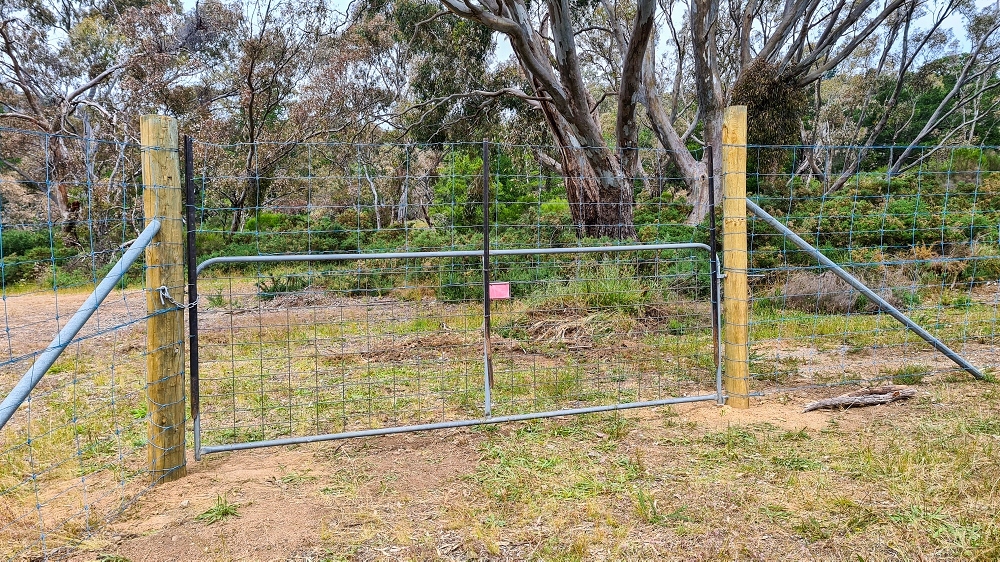
4. Netting enclosures
These are a wonderful idea if you can afford one. They can serve the dual purpose of keeping out larger animals as well as birds, fruit bats, and even possums.
The enclosure in the photo below (which we saw at Kalangadoo Organics) is made from PVC pipe. The walls are reinforced over the bottom half with chicken wire, with bird netting over the hoops at the top – a brilliant solution.
A key part of an enclosure like this working well is learning how to prune your trees to the correct height.
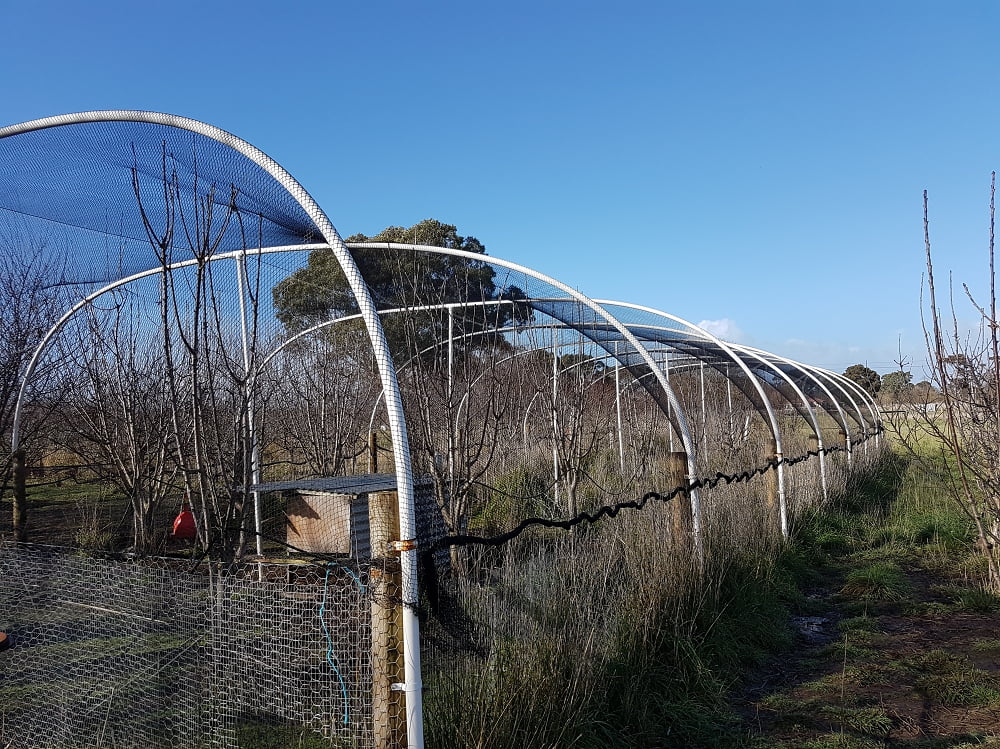
Other animals
Protective animals like alpacas or maremma dogs can be fantastically useful in keeping wild animals away. However, they’re intended to protect other animals (like chickens) rather than fruit trees.
One of the natural predators of kangaroos and wallabies is the dingo, so a dog in the garden or orchard may keep them away.
Prioritising prevention
Building appropriate protection for your trees can easily become one of those jobs that keep falling to the bottom of the ‘to do’ list, but in nearly every case it’s worth the time and energy.
To help you bump it up the list, we’ve included some resources on building hoop net systems (such as the one above) in the short course Protect Your Crop From Birds.
The reality is, if you’re trying to grow food in an environment where lots of animals are hungry, you’ll need to build protection to make sure you get some. You may like the idea of sharing, but they don’t!
Related Articles
6 step plan for beating Codling moth in apples
The classic “worm in the apple” is actually the larvae of the Codling moth, a very annoying pest that needs a planned effort to prevent.
What You Need to Know About Pesticides
Growing organic fruit has never been so important, with new evidence showing pesticides escaping into the environment at scarily high rates.
How to overcome fear of insects in fruit trees
Are insects in fruit trees a bad thing or a good thing? Learning to appreciate insects is an important part of adopting an organic mindset.


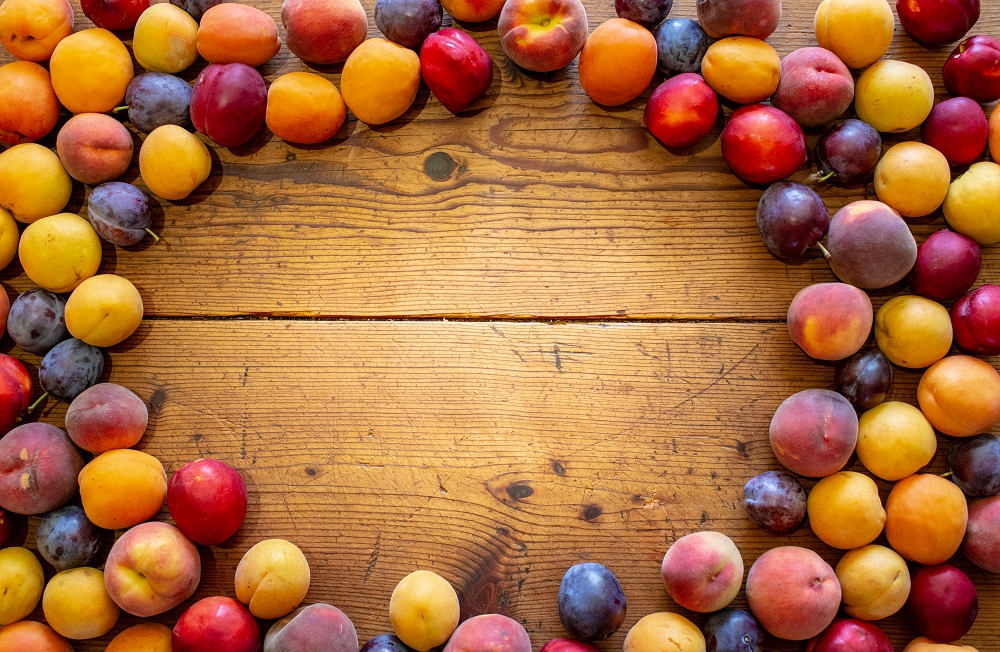
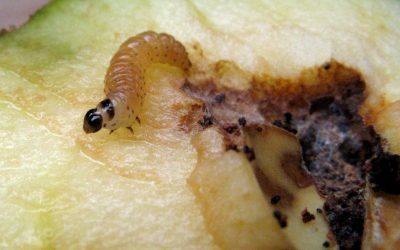
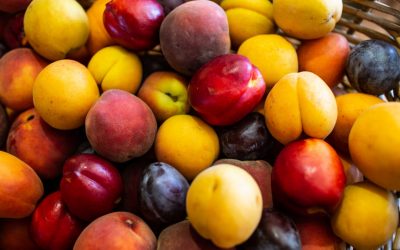

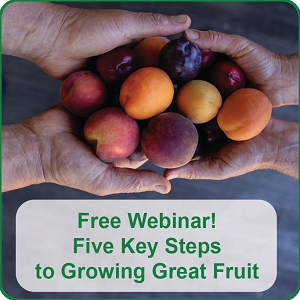
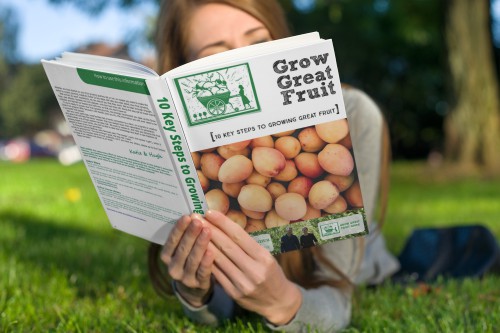
Very helpful article. Thanks!
Thanks for the feedback Traci, glad you found it useful!
We have used 200mm sq weldmesh -= take a full sheet and cut into quarters – then roll each piece into a 1m diameter circle that is then 1.2 m high – perfect to keep roos back from young trees – and around $16 per tree
Great tip, thanks Kim
FYI – we’ve had a similar structure to Kalangadoo over our raspberries with chicken wire on bottom and bird netting on top. Unfortunately this season our bird netting failed the UV test and failed where it touched the poly pipe. Luckily it failed end of summer after most of the raspberries were harvested. We’ve just replaced it with chicken wire, But if we were to do it again we would bite the bullet and expense and do chicken wire across all of it from the start. It’s an effort, but having to replace the bird netting every 2 years also adds up in cost and effort.
We adopted this philosophy when we built the fruit cage for the orchard, and I can say that the one and done using chicken wire from start and not messing with nets is now paying dividends in fruit production.
Great point Kelly – spending money on good infrastructure is always worth it in the long run.
I’m concerned to see how short a life your bird netting had. Thought it could last much longer. What type / brand did you use please?
We did the same as Kelly. Now it is all wire protected from the possums it has become a haven for rats as they sneak in and are protected from the owls and any other predators. They have been known to bring fruit from next door and eat it under the shelter of our cover. Can’t find where they come in and they won’t touch the traps. Really don’t want to use poison but I am getting desperate now.
Oh dear Mary! That does sounds really frustrating. Isn’t it interesting how our ‘solutions’ can create their own problems? Hope you can reduce the problem soon – Meg GGF team.